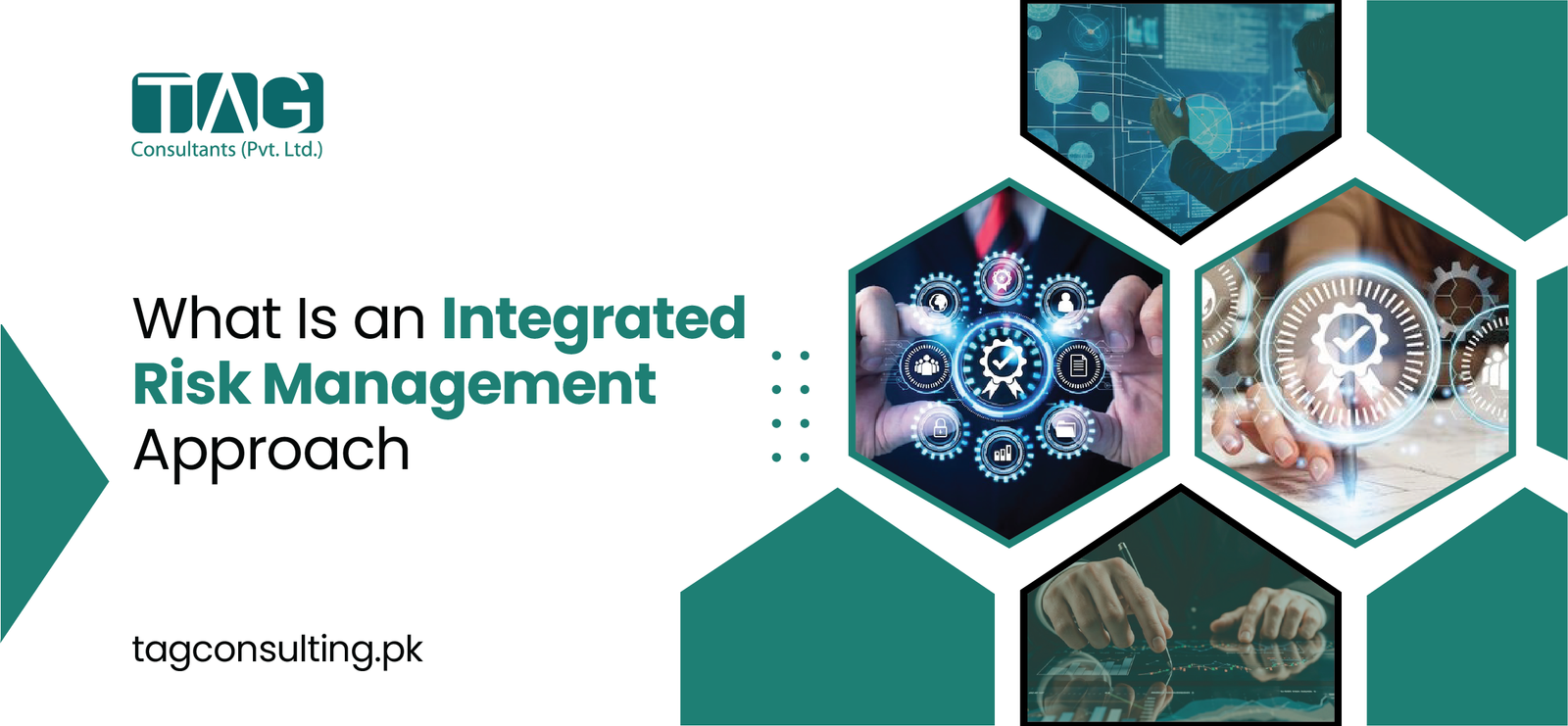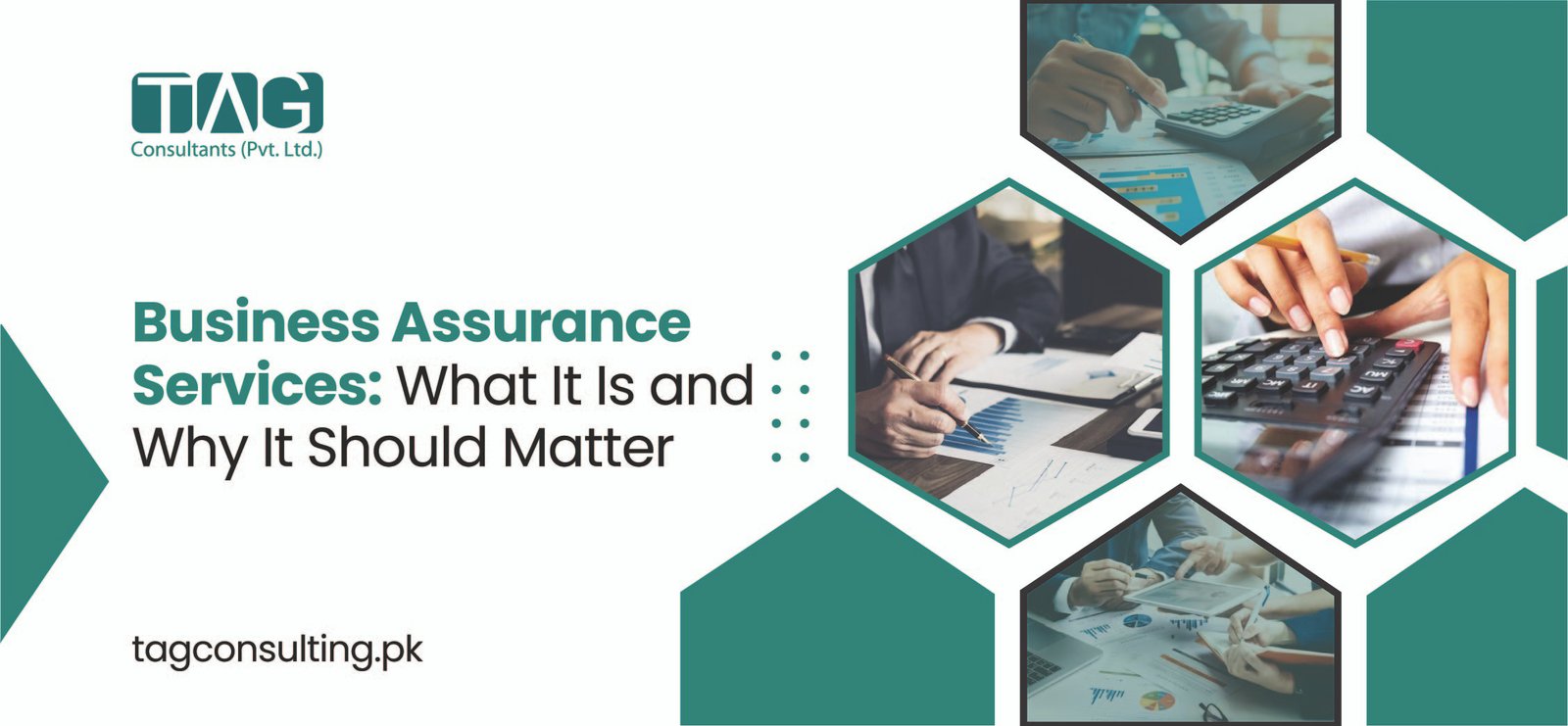Blog

What Is an Integrated Risk Management Approach
Risk exists everywhere, from cyber attacks to altering legislation, and neglecting it can have serious consequences for your business. IRM centralizes your risks, giving you more control and smarter solutions to protect and grow your business.
Instead of managing risks in separate departments, IRM integrates all aspects of your organization, allowing you to see the big picture. This integrated approach allows you to prioritize what is most important, reduce surprises, and make confident decisions that are aligned with business objectives.
In this article, we’ll look at what IRM is, why it’s important, how to execute it effectively, and how TAG Consulting PK can help your company establish a strong, resilient risk strategy.
Components of an Integrated Risk Management Approach
Data security, auditing, vendor management, compliance, and operational hazards are all fundamental to integrated risk management (IRM). Everyone is using the same data and working toward the same goals thanks to this integration, which eliminates the old departmental walls. An integral part of incident response management is creating a risk-aware culture in which both management and staff are aware of the significance of risk management in their everyday work.
Here, technology’s ability to automate operations and centralize risk data is vital. The use of digital tools has changed risk management from a static exercise to an ongoing, unpredictable process by providing real-time insights into the organization’s risk situation.
Six Steps to Implement IRM
Build a Risk Culture and Leadership
The first stage in integrated risk management is to make risk awareness an integral part of company culture. The initiative needs to be led by upper management, who should encourage open communication about potential risks and verify that risk management is a high priority across the board.
Risk Identification
The process of risk identification involves examining potential ways that changes in operations, strategy, technology, or policies could subject the business to new threats. Risks must be divided into categories, sources, and drivers in order to fully comprehend what might go wrong.
Risk Assessment
It is necessary to assess the possible consequences and probability of occurrence of risks after they have been recognized. To effectively manage resources, it is helpful to prioritize risks. This way, the most critical threats can be addressed.
Risk Response
Risk management strategies are developed by corporations following an assessment. Some examples of this include making adjustments to procedures in order to reduce or eliminate risks, accepting smaller risks, or transferring them through insurance or contracts.
Continuous Risk Monitoring
Maintaining Integrated Risk Management is an ongoing process. Since risks are unpredictable, it is important for companies to consistently track risk indicators and evaluate the success of mitigation solutions. By remaining vigilant at all times, we can quickly respond to new dangers as they arise.
Communication and Reporting
Assure that all stakeholders, including frontline workers and board members, are informed about risk exposures and mitigation initiatives through consistent and transparent communication. Accountability and better decision-making are facilitated by transparent reporting.
Benefits of Adopting IRM
There are several important benefits of implementing IRM. To begin with, it allows for more informed and assured decision-making by providing comprehensive insight across all threats. The organization becomes stronger and better able to adjust easily to unexpected events because of this full picture.
Since IRM minimizes wasted work and maximizes the use of available resources, it helps keep costs down. With integrated frameworks, regulatory compliance can be more easily managed, which helps to avoid penalties and damage to reputation. Additionally, response times are shortened and silos are broken down through improved data management.
IRM vs. ERM Difference
Integrated Risk Management (IRM) is more holistic and comprehensive than Enterprise Risk Management (ERM), which is more narrowly focused on detecting and controlling hazards at the organization level. By bridging the gap between different areas of risk study, IRM develops a central strategy to better integrate risk management with overall company goals. In light of the complexity of the risk environment, this makes IRM more flexible and dynamic.
The Role of Technology in IRM
The Integrated Risk Management industry has been modified by technology. Among the features offered by modern IRM software platforms are automated workflows, comprehensive reporting capabilities, risk heatmaps, and real-time dashboards. These tools make work easier, increase cross-departmental cooperation, and can expand with your business.
Businesses can respond quickly to new risks, keep up with regulations, and continuously assess their risk posture through using technology. Also, analytics and automated alerts make proactive risk management possible, instead than just responding to crises as they happen.
How TAG Consulting PK Supports Smarter Risk Strategies
Local knowledge and customized strategies are necessary for managing the GCC region’s and Pakistan’s risk situation. TAG Consulting PK excels at helping companies identify and mitigate risks in accordance with ISO 31000 and domestic regulations.
At every stage, you will be kept informed by our personalized risk assessments, strategic planning, and dashboards that track risk in real-time. You can rest easy knowing that our compliance support will keep you in line with SECP, FBR, and audits that are relevant to your industry. Risk management can be changed from an afterthought into an integral part of your company’s everyday operations with the support of our training programs.
A mid-sized logistics company in Lahore was one of our previous clients. Through risk strategy redesign and hands-on training, we reduced cyber and operational risks by 40% in six months, improving readiness and resilience.
Get Started with Your IRM Journey
Finding out where you are in terms of risk management maturity is the first step in implementing Integrated Risk Management. Learn your current situation and find the holes that IRM can fix. Establish a clear understanding of your organization’s risk tolerance and adjust your goals appropriately.
Breaking down divisions and maintaining united action requires cross-departmental collaboration and support from leadership. Make sure the IRM software you choose is suitable for your company’s size, industry, and future objectives. Finally, risk management is a process, not a goal, therefore methods should encourage continuous improvement.
Conclusion
Businesses can confidently handle today’s unknowns and build a strong future with Integrated Risk Management. By integrating risk tasks, employing technology, and promoting risk awareness, your organization may improve decisions, decrease costs, and comply.
Ready to strengthen your risk strategy? Partner with TAG Consulting PK for customized IRM solutions designed for Pakistan and the GCC markets. Contact us today to start your journey toward smarter, more effective risk management.





